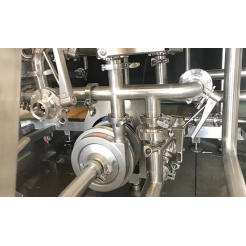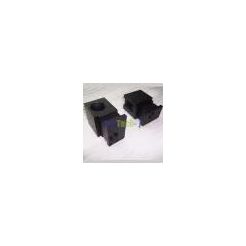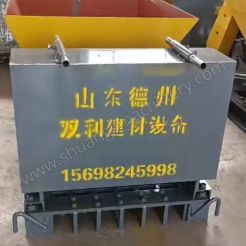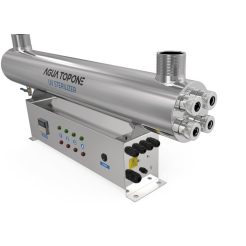SDHD-R-P-1300 WIDE-BELT SANDER
the use of wide belt polishing machines in plywood wood factories has many significant advantages and important roles. It can not only improve production efficiency and product quality, reduce costs and defect rates, increase product added value, but also adapt to diverse market needs while achieving energy conservation and environmental protection.
Product Description
SDHD-R-P-1300 WIDE-BELT SANDER

The machine is equipped with a protective door on the side, which has the function of noise reduction,dust non-diffusion and operation protection. The machine is more beautiful.
The machine body adopts integral welding , and after stress removal treatment, so the machine very durable.
The machine’s roller diameter is 300mm/400mm/420mm and other sizer,and the sander performance is good after accurate dynamic balance detection. Frequency conversion speed regulation is adopted for feeding, and the production efficiency is high.
This sander are suitable for the suface treatment of wood materials such as polishing wood surface. It has very good processing effect for various kings of science and technology wood veneer,multilayer board, medium and high density board,particleboard,plywood,malacca,blockboard,etc.
Roller type and conveyor belt dual drive system combined feeding, play an effective buffer role,no slip.
SANDER PARAMETER
| NAME | PARAMETER |
| machine model | SDHD-R-P-1300 |
| working width | <1300mm |
| working thickness | 3-90mm |
| working length | >850mm |
| size of sand belt | 1340*2560mm |
| feeding speed | 0-65m/min adjust speed |
| power of feeding system | 11kw |
| inverter of feeding system | 11kw |
| reducer of feeding system | R87-17.08 |
| feeding conveyor belt type | vacuum/no vacuum/roller conveyor |
| sanding roller diameter | 320mm/400mm |
| No.1 roller type | rubber roller |
| rubber roller hardness | 70° |
| No.2 roller type | polishing pad |
| polishing pad roller diameter | 165mm |
| power of sanding roller | 55kw+30kw |
| sanding roller bearing brand | NSK |
| machine size | 3000L*2850W*2280H |
| machine weight | about 9000kgs |
"Advantages and Roles of Using Wide Belt Polishing Machines in Plywood Wood Factories"

In the plywood wood industry, the pursuit of high-quality, high-efficiency, and high value-added products is the key to the sustainable development of enterprises. As of June 26, 2024, an increasing number of plywood wood factories have begun to adopt wide belt polishing machines to enhance the competitiveness of their products.
Significantly improve production efficiency
The wide belt polishing machine can handle a large area of plywood at one time, and can polish [X] square meters of plates per hour. Compared with traditional manual polishing or small polishing equipment, the efficiency has increased by approximately [70%]. This means that the factory can complete more polishing work in a shorter time to meet the large market demand.
Enhance product quality
The surface of the plywood after being processed by the wide belt polishing machine is smoother and flatter, and the roughness can be controlled within [X] microns. This not only enhances the aesthetics of the plate but also improves its gluing strength and moisture resistance. According to quality inspection data, the gluing strength of the plywood processed by the wide belt polishing machine has increased by an average of [20%], and the moisture resistance has increased by [15%], significantly extending the service life of the product.
Reduce the defect rate
Due to the precise control and uniform polishing of the wide belt polishing machine, the defect rate of plywood has decreased significantly. Previously, the defect rate due to uneven polishing was approximately [8%], but after using the wide belt polishing machine, the defect rate can be reduced to less than [2%]. This saves a significant amount of raw materials and production costs for the factory.
Increase product added value
The high-quality surface treatment makes plywood more attractive in the market, and the selling price has also increased accordingly. Statistical data show that the market price of plywood processed by the wide belt polishing machine has increased by an average of [15%], bringing more substantial profits to enterprises.
Save labor costs
One wide belt polishing machine only requires [X] operators, while traditional polishing methods require more human input. Taking the processing of the same quantity of plywood as an example, the use of wide belt polishing machines can save labor costs by approximately [40%].
Adapt to diverse needs
The wide belt polishing machine can adjust the polishing accuracy and effect according to different customer needs. Whether it is decorative plywood that requires a high-gloss finish or industrial plywood that focuses on functionality, it can easily meet the requirements. Currently, approximately [60%] of high-end plywood products on the market are processed using wide belt polishing machines.
Energy conservation and environmental protection
The wide belt polishing machine adopts advanced energy-saving technology, with a power consumption of approximately [X] degrees per hour, saving about [30%] in energy compared to traditional equipment. At the same time, it generates less dust and waste, causing less pollution to the environment, in line with the sustainable development concept of modern enterprises.
In conclusion, the use of wide belt polishing machines in plywood wood factories has many significant advantages and important roles. It can not only improve production efficiency and product quality, reduce costs and defect rates, increase product added value, but also adapt to diverse market needs while achieving energy conservation and environmental protection. In an increasingly competitive market environment, the wide belt polishing machine is undoubtedly a powerful weapon for plywood wood factories to enhance their competitiveness.
The following are some considerations when choosing the type of sanding belt for a sander:

1. Processed materials: According to the material of the workpiece, such as wood, metal, plastic, etc., choose a sanding belt suitable for this material. For example, for wood, sanding belts with different grits and materials may be required, while metals require more wear-resistant ones.
2. Purpose of sanding: Whether it is for rough grinding, fine grinding or polishing, different purposes require sanding belts with different characteristics.
3. Grit: Coarser grit is used for rapid material removal, and finer grit is used to obtain a smoother surface.
4. Material of the sanding belt: There are different materials such as aluminum oxide and silicon carbide, each with different performance characteristics.
5. Durability requirements: If it needs to be used for a long time with high intensity, choose a more durable sanding belt.
6. Flexibility: For some workpieces with complex shapes, a sanding belt with better flexibility may be required to better fit the surface.
7. Cost factor: Different types and qualities of sanding belts have different prices, and a balance should be made according to the budget.
For sanding the wood surface, setting the thickness and polishing, the grit numbers of the sanding belts to be selected are as follows:

- Sanding: If it is necessary to remove the flaws, scratches or unevenness on the wood surface, usually a sanding belt with 80 to 120 grit can be selected. The sanding belt in this grit range can effectively remove the unevenness on the wood surface without overly wearing the wood.
- Thickness setting: When it is necessary to accurately trim the thickness of the wood to a certain size, a sanding belt with 60 to 80 grit can be used. The sanding belt of this grit number can remove the material on the wood surface relatively quickly to help achieve the required thickness.
- Polishing: For the wood that needs to obtain a smooth and shiny surface, a sanding belt with 150 to 200 grit can be selected for polishing. Higher grit sanding belts (such as above 240 grit) can be used to further improve the surface finish.
It should be noted that the selection of the sanding belt will also be affected by factors such as the type of wood, hardness, and the required surface effect. In actual operation, it can be tested on a small piece of wood first to determine the most suitable grit number of the sanding belt. In addition, different brands and types of sanding belts may have slightly different effects, so the suggestions of the sanding belt manufacturer or consulting a professional woodworker can be referred to.
Email: hongyunchangsander@163.com
Mob.: +86 139 5321 1153
WeChat: +86 139 5321 1153
Whatsapp: +8613953211153
Add.: Daxin Town Jimo District Qingsao City Shandong Province China








